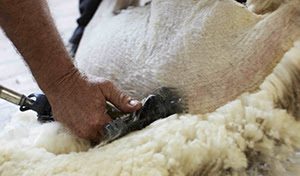
Australian wool production is recovering.
AUSTRALIA’S wool production is stabilising, but low sheep numbers will continue to hamper recovery, according to the latest industry forecast.
The Australian Wool Production Forecasting Committee’s third forecast of shorn wool production for 2020/21 is 287 mkg greasy, up 1.1 percent on its 2019/20 estimate of 284 mkg. About 300 mkg of greasy wool was produced in the 2018/19 season.
The committee said favourable seasonal conditions in most wool producing regions, except Western Australia and Queensland, have helped stabilise wool production although low sheep numbers will continue to hamper a recovery in shorn wool production.
The committee has estimated Australian shorn wool production for 2019/20 was 284 mkg greasy, a 5.3pc decline on the 300 mkg total for 2018/19. This reflected the sustained dry and drought conditions across large parts of the country last season.
AWPFC chairman, Russell Pattinson, said most wool producing regions in NSW, Victoria, South Australia and Tasmania have had exceptional spring seasons with high feed availability and relatively low sheep numbers leading to increased fleece weights in many regions.
“Important drought-breaking rain has finally fallen in the pastoral regions of South Australia, with favourable seasonal conditions forecast for the next few months.
“However, persistent dry conditions throughout Western Australia and Queensland continue, with further year-on-year declines in shorn wool production expected in both these states,” he said.
The committee expected the number of sheep shorn to decline by 5.5pc in 2020/21 to 64.8 million, reflecting lower opening sheep numbers and a reduction in premature shearing. Western Australia is expected to be the most affected state, following record levels of interstate transfer of ewes and lambs to southern and eastern states between July and November.
On a national basis, the average wool cut per head for the season is expected to increase by 7.3pc to 4.43kgs because of improved seasonal conditions, along with wool producers returning to longer shearing intervals and some delays in shearing due to reduced shearer availability, which is resulting in longer fleece wool.
AWTA key test data from July to November has shown a year-on-year increase in fibre diameter of 0.2 microns, a 2.9mm increase in staple length, a 1.3 N/ktex increase in staple strength and 0.8pc increase in yield.
Sheep and lamb turn off data from the Australian Bureau of Statistics for the September quarter (July to September 2020) showed a 15pc decrease in total turn-off compared with the same period in 2019 as producers begin to rebuild their flocks.
The latest AWI/MLA Wool and Sheepmeat survey, in October 2020, found that more than 40pc of producers intend to increase breeding ewe numbers, compared with 27pc of producers in October 2019.

HAVE YOUR SAY